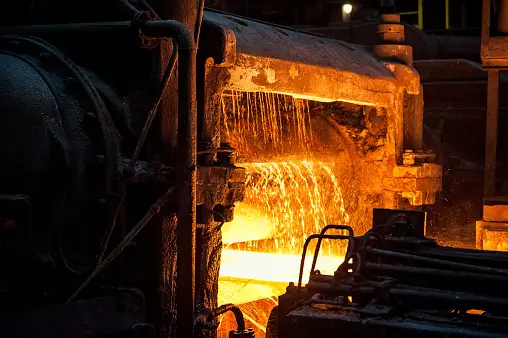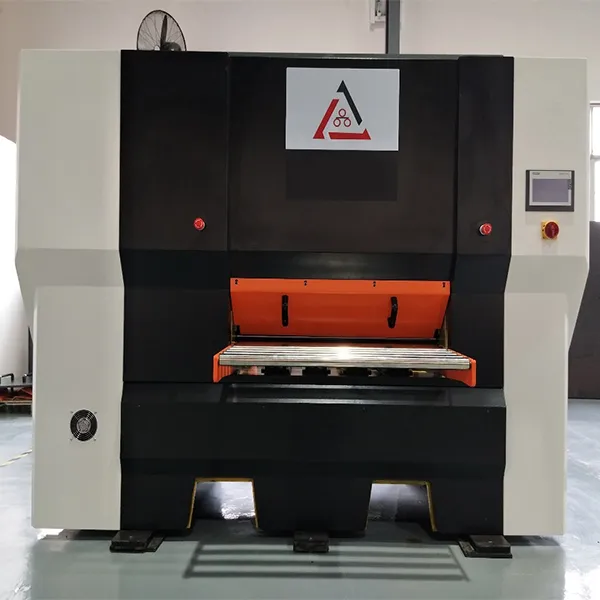
How a Decoiler Straightener Feeder Integrates into Automated Systems
In modern manufacturing facilities, the pursuit of maximum efficiency has made automation not just an advantage but a necessity. At the heart of many automated metal forming and processing lines—serving stamping presses, laser cutters, and punch presses—lies a critical workhorse: the decoiler straightener feeder. This integrated system is far more than the sum of its parts; it is the crucial link that transforms raw coiled steel into a continuous, precision-ready stream of flat material, seamlessly feeding the heart of the production cell.
The Trio of Functions: A Synergistic Workflow
A decoiler straightener feeder combines three essential processes into one harmonious unit:
-
Decoiling: The system starts with a heavy-duty decoiler, which acts as the material reservoir. It holds a massive coil of steel (weighing several tons) and unwinds it in a controlled manner. Modern decoilers often feature motor-driven mandrels with expanding segments to securely grip the coil from the inside, ensuring no slippage. An integrated braking system or a back-tension unit provides consistent resistance against the unwinding force, preventing the coil from uncontrollably spooling out due to its own inertia.
-
Straightening & Leveling: The newly uncoiled material carries a pronounced curvature (known as "coil set") and internal stresses. This curved strip is then guided into the straightener or leveler. This machine, typically a roller leveler with a series of small-diameter, intermeshed rolls, performs a mechanical miracle. By repeatedly bending the metal back and forth past its yield point in opposing directions, it permanently removes the coil memory and any cross-bow or edge wave. The result is a perfectly flat, stress-relieved sheet.
-
Feeding: The final, now-flat material is fed into the processing machine (e.g., a press) by the feeder unit. This is most commonly a servo-driven roll feeder, which uses two sets of hardened rolls (one upper, one lower) to grip the material. The servo motor provides exceptional accuracy, allowing the feeder to advance the material a precise, pre-programmed length (the "feed length") with each cycle. This "start-stop" motion is synchronized with the press or laser, ensuring a part is stamped or cut with every stroke.
The Nervous System: Control Integration for Seamless Automation
The true power of this system is unlocked by its integration into a centralized control system, typically a PLC (Programmable Logic Controller). This acts as the nervous system for the entire automated cell.
-
Synchronization: The PLC receives a signal from the press (e.g., a "part ejection" or "top dead center" signal). It then commands the servo feeder to execute a feed cycle. Simultaneously, it ensures the decoiler is unwinding the correct amount of material and the straightener is running at a synchronized speed. This eliminates material loops, snags, or tension spikes that would cause a production halt.
-
Material Tracking & Management: The control system can track the total length of material fed, allowing it to signal when a coil is nearing its end. This can trigger an alert for an operator to prepare the next coil, or in fully automated lines, initiate a coil changeover sequence.
-
Recipe Management: For job shops that produce different parts from various materials, the system can store "recipes." With a single command, the system can auto-adjust the straightener's roll pressure for material thickness, set the servo feed length, and configure the decoiler's tension, enabling lightning-fast changeovers and eliminating human error.
Tangible Benefits of Integration: The Competitive Edge
Integrating a decoiler straightener feeder into an automated system delivers profound operational benefits:
-
Dramatically Increased Productivity: By eliminating the manual loading of individual blanks, the production cell can run continuously, 24/7 if needed. Cycle times are maximized, and overall equipment effectiveness (OEE) skyrockets.
-
Unmatched Precision and Consistency: Automated servo feeding guarantees that every single part is stamped or cut from a perfectly flat material at an exact length. This eliminates dimensional variation, drastically reduces scrap, and ensures consistent, high-quality output.
-
Significant Labor Reduction: The system requires minimal human intervention—primarily for loading new coils and periodic monitoring. One operator can often manage multiple automated lines, optimizing labor costs.
-
Enhanced Safety: By automating the handling of heavy, sharp-edged coils and removing operators from the immediate danger zone of the press, the system significantly improves workplace safety.
-
Optimized Material Utilization: The ability to feed material right to the very end of a coil (a process known as "coil tail-out") minimizes skeleton waste, leading to direct material cost savings.
The XINLIJIN Advantage in Automation
At XINLIJIN, we engineer our decoiler straightener feeder lines with seamless integration as a core principle. Our systems are designed for robust, reliable communication with all major brands of presses and CNC controllers. We provide not just machinery, but a complete automation solution that includes comprehensive installation support, operator training, and ongoing technical service, ensuring your investment delivers maximum uptime and a rapid return on investment.
By serving as the vital bridge between raw material and finished part, a well-integrated decoiler straightener feeder is the backbone of a modern, lean, and highly profitable manufacturing operation.


















































